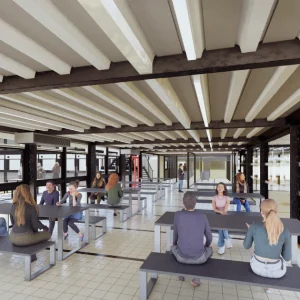
Future Memory Pavilion, an installation by Asif Khan and Pernilla Ohrstedt, is unveiled today as the Future Memory in Singapore, as the platform for promotion of British architects and designers, culminates.
The Future Memory Pavilion comprises of two cones stretching up to eight meters high and 20 meters in diameter. Made of ice and sand, the cones are formed using concentric ropes, that taper the structure.
Typically for Khan and on par with the Future Memory programme the form is designed to morph with passing time, as the ice melts and trickling water erodes the sand structure. Visitors are also encouraged to interact to represent the human impact on the environment. Ultimately both cones melt away. The manner in which the cones disappear is intended to provoke visitors to reflect on issues of climate and urban development.
The Pavilion’s creators, Khan and Ohrstedt, drew their inspiration from Singapore’s history. The conical forms emulate the hills of Singapore, which were methodically destroyed, as the soil was needed for the expansion of island’s grounds. Chinese merchants were importing ice from New England as far back as 1854. It was considered a luxury in the tropical climate and available only to the wealthiest Singaporeans.

Asif Khan is a Design Miami 2011 Designer of the Future known for his Cloud project and West Beach Café in Littlehampton. Pernilla Ohrstedt is an architect and exhibitions producer. Artists met at Bartlett architecture school. Recently they are preoccupied with setting up their new practice Pernilla&Asif. See next months Blueprint for an interview with the designers.
The Future Memory was created by Royal Academy of Arts and British Council.





